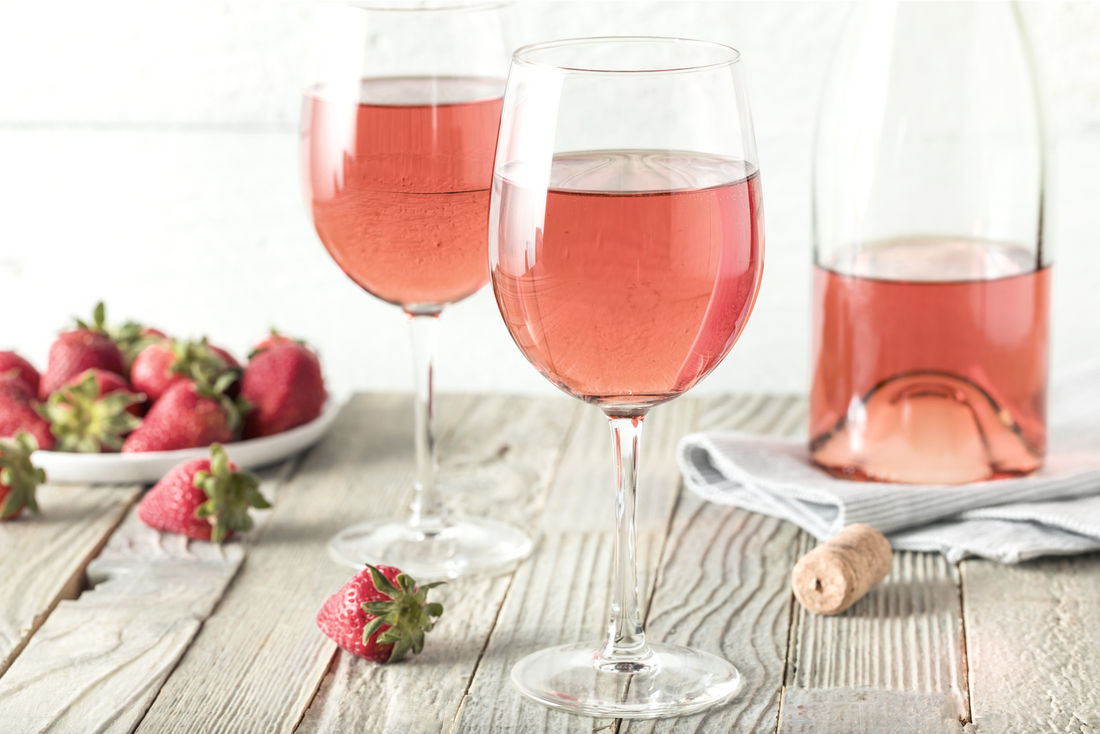By Rai Cornell

Fireworks, raspberry lemonade, and beautiful languid sunsets... all the shades we associate with summer match our favorite pink drink.
While we sit here reminiscing and sighing over all the wonderful things to look forward to this summer, let’s talk about the all time greatest summer wine:
Rosé.
Previously thought to be a drink reserved for college girls and the Desperate Housewives, rosé is making a come back now that more people are seeing it for the gem it is.
Here’s what you need to know about the many faces of rosé so you never underestimate a glass of the pink stuff again.
The Rosé Way
First, a quick history lesson.
Rosé is made in three unique ways: blending, maceration, and saignée.
First, the blending method. Only about five percent of rosé wine is made with this process. It’s simple, really: a winemaker takes a small bit of red wine and splashes it into a vat of white wine. It’s a little like cheating and it doesn’t result in the best flat rosé wines, but in the sparkling variety it can be top shelf stuff.
The next is the maceration method, which you can think of as a hurried red wine preparation. Red wine absorbs its deep, rich colors from the skins of the grapes over the course of months. The longer the wine is left to intermingle with the pigments, the darker the color will be.
When winemakers prepare rosé, they only let the wine hang out with the skins for up to 20 hours. This gives the wine plenty of opportunity to pick up the hues of the grape skins without picking up as much of the tannins and acidity.
Lastly, the saignée method. This fancy word is French for “bleeding” and refers to a part of the red-wine-making process in which part of the grape juice is siphoned off and used to make a small batch of rosé. It’s a rare technique, but one that yields both a beautiful rosé wine and a more concentrated red.
Each of these techniques results in different flavor profiles. The types of grapes used and aging processes also make the difference between the type of rosé that ends up in a box and the type that ends up in Meek Mill rap video.
Not a One Trick Pony
If you’re one of those wine lovers who can’t be monogamous to either red or white wine, you’re in luck. Rosé wine is the beautiful combination of the best things from both sides of the fence.
While rosé is brimming with all the bright, refreshing qualities of white wine and can be served chilled on an indulgent summer evening, it can be deceptively robust with the body and complexity of red wine.
Color
Never judge a rosé by its color. In fact, while most people think the term “rosé” applies strictly to pink-tinged wine, that’s far from the truth.
Rosé wines can come in a variety of colors, ranging from the light pink of a bunny’s nose to the deep, rustic orange of a bonfire – and everything in between. Ruby, cotton candy, coral – these are all varieties of rosé wine and they each have a unique character and personality that you’ll never forget.
Body
From Sangiovese to Tempranillo to Tavel, rosé wine comes in many different forms and each has its own unique body and structure. For example, rosés made from Sangiovese grapes are known for having a pleasant yet dry finish with a surprisingly refreshing acidity.
Tavel rosés, on the other hand, are notorious for being so bold you could swear you were sipping a classic red. Known for being a favorite beverage of Ernest Hemingway, Tavel rosés have a high alcohol content, are lower on the acidity spectrum, and layer your tongue with complex flavors reminiscent of fruit and nuts.
But the best way to get to know the true nature of each of these rosés is to simply try a lot of wine! VINEBOX's Shades of Summer is the perfect place to start and try 6 different rosé styles in 1 box (plus 2 reds and a white).
Personality
Just like Californians are in a league of their own apart from the French and German winemakers of the world, their rosé offspring come with their own unique character traits.
California’s most popular grape variety used to make top notch rosé is the Zinfandel. Often referred to as “white zinfandel,” rosé made with zin grapes will be sweet and make you feel like you should be roasting s’mores and poppin’ Pez all night long.
European grapes like Cinsault and Grenache carry with them a long, storied history that can be tasted in the rosés they produce. Rosés made from grapes grown in the Rhône region have a mild acidity, earthy notes, and higher alcohol content.
Find Your Rosé Fix
While we like to think of ourselves as the wine experts in these parts, no one but you can be an expert on your unique palate.
Rosés are often seen as superficial, predictable characters in the wine family, but that’s just a facade. In truth, they’re mysterious, captivating, and surprising. What may look like a sweet, sugar-laden drink may just be the brightest, most refreshing sip of your summer.
With those long days and warm nights ahead, it’s time to try all the rosés and find your perfect pink pairing.
Snap a sultry summer pic and tag us on Instagram with #getVINEBOX so we can share in the fun, too!

